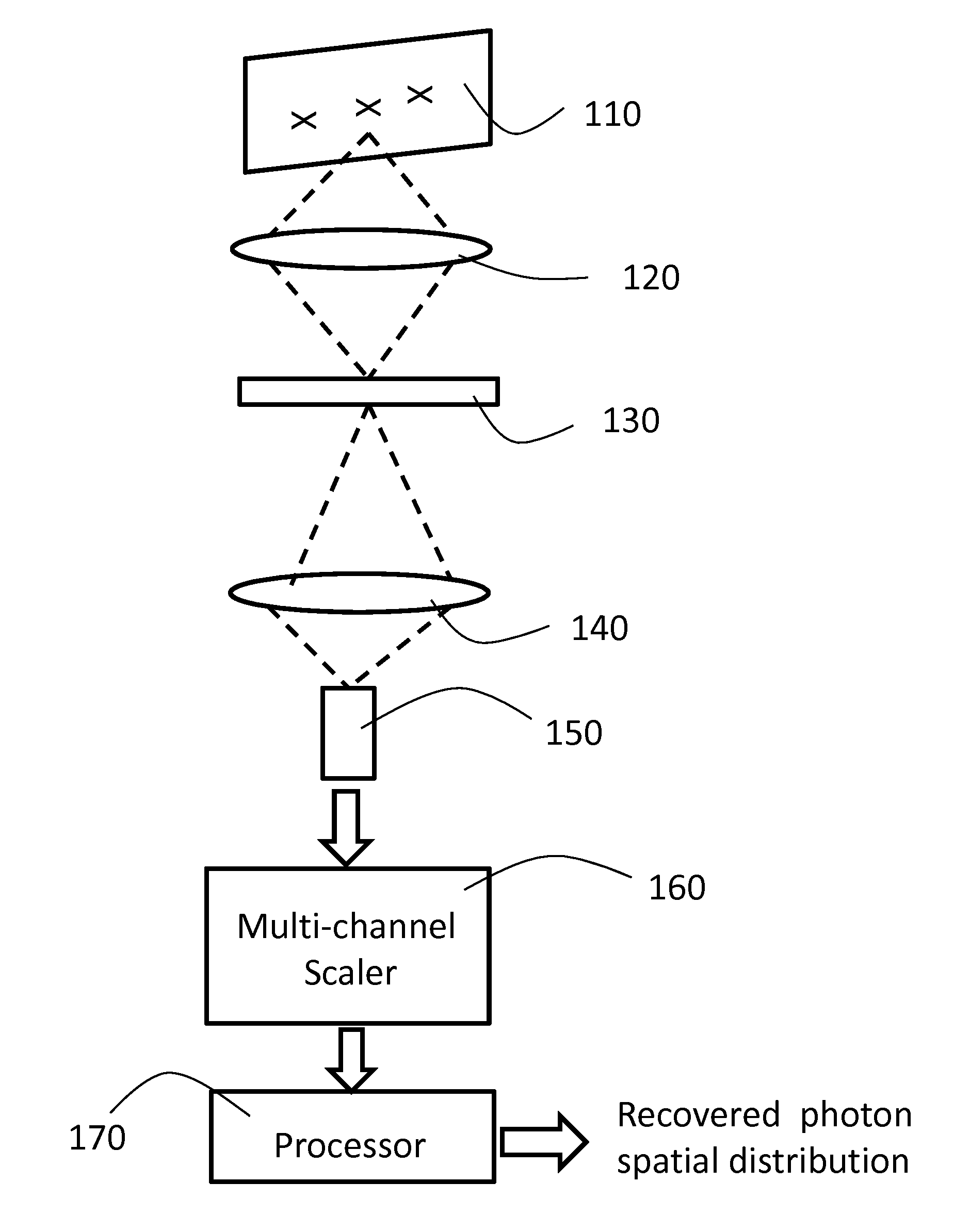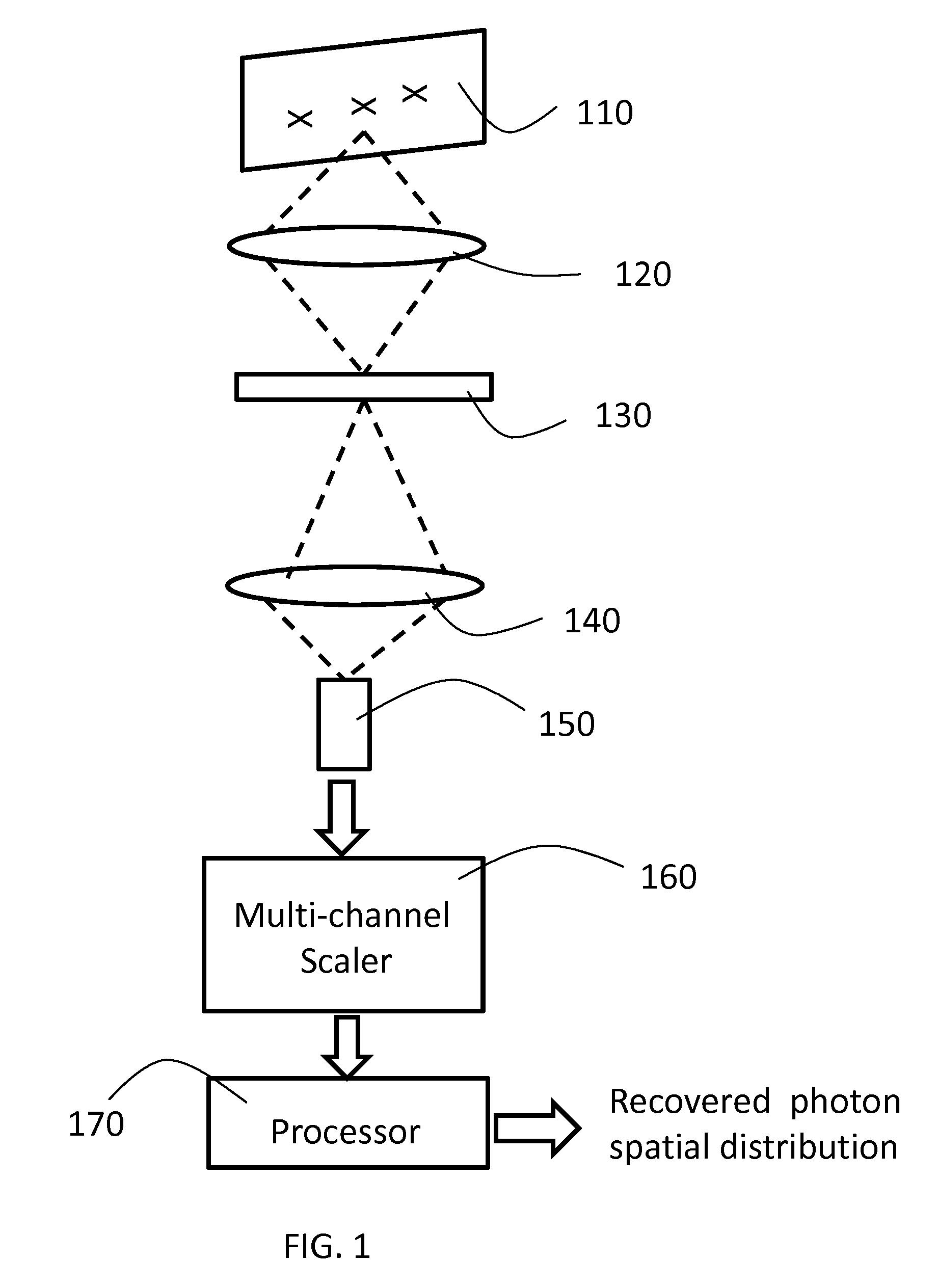Temporally- And Spatially-Resolved Single Photon Counting Using Compressive Sensing For Debug Of Integrated Circuits, Lidar And Other Applications
a technology of compressive sensing and integrated circuit, applied in the field of system and method for temporally and spatially resolved single photon counting using compressive sensing, can solve the problems of inability to provide spatial as well as temporal resolution, inability to search, and prohibitively complex most photon counting devices, such as standard pmts and apds, to achieve faster acquisition times, improve the performance of instruments, and improve the effect of signal to noise ratio
- Summary
- Abstract
- Description
- Claims
- Application Information
AI Technical Summary
Benefits of technology
Problems solved by technology
Method used
Image
Examples
Embodiment Construction
[0028]In a preferred embodiment of the present invention, compressive sensing (CS) is used via a spatial light modulator to obtain spatial and temporal data from photon-counting measurements. The technique could be applied to LIDAR as well as to debug and failure analysis of integrated circuits. Instead of using an imaging photomultiplier tube (which have very low quantum efficiency and / or high dark counts in the spectral range of interest) one can use a single-element photon-counting device in conjunction with a spatial light modulator (SLM).
[0029]A setup of a preferred embodiment of the present invention, as shown in FIG. 1, has an object or scene 110, a lens or light collector 120, a spatial light modulator, or SLM, 130, a light collector or lens 140, and a single element detector or time resolved photon counter 150. The object or scene 110 may be illuminated, such as by a pulsed laser light source, or may be self-luminous, e.g., hot electron luminescence in semiconductor integra...
PUM
 Login to View More
Login to View More Abstract
Description
Claims
Application Information
 Login to View More
Login to View More - R&D
- Intellectual Property
- Life Sciences
- Materials
- Tech Scout
- Unparalleled Data Quality
- Higher Quality Content
- 60% Fewer Hallucinations
Browse by: Latest US Patents, China's latest patents, Technical Efficacy Thesaurus, Application Domain, Technology Topic, Popular Technical Reports.
© 2025 PatSnap. All rights reserved.Legal|Privacy policy|Modern Slavery Act Transparency Statement|Sitemap|About US| Contact US: help@patsnap.com



